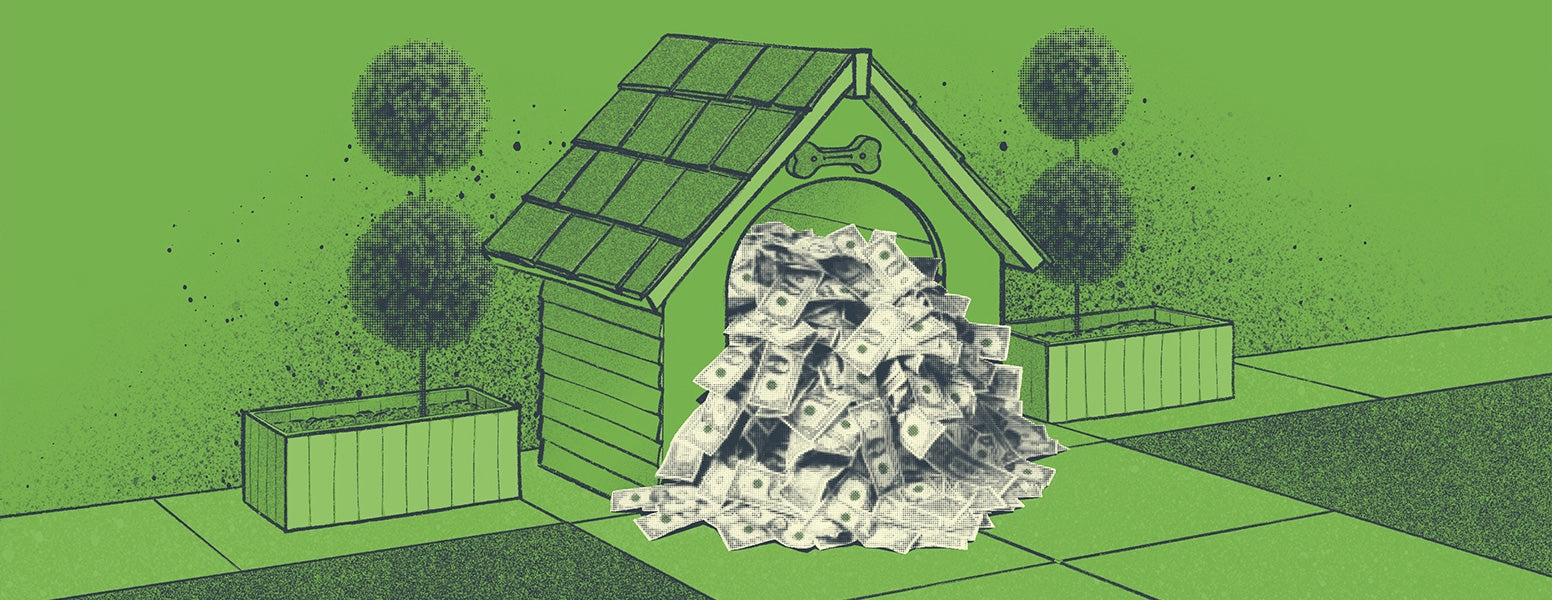Four real estate trends that prove dogs are the new kids
 |
Travis Hitt Travis Hitt has been a real estate agent in the Dallas, Texas, metropolitan area since 2012. He is a licensed Realtor with Rogers Healy and Associates, where he sells investment property as well as residential real estate. |
I've been selling houses in the North Dallas area for about 10 years now, and in that time I've seen a number of changes in the residential real estate market. At the top of the list? Pets—mostly dogs—drive a lot more decisions than they used to, especially when it comes to young people buying their first home. Here are some of the trends I've noticed.
1. Pools are optional. Green space is not.
Here in Texas we love our pools. Twenty to 30 years ago, a pool was the top request for couples buying their first home. But back then most couples had young children at that point in life, and they wanted the pool for the kids. Today we have DINKs (dual-income no kids) and HENRYs (high earners not rich yet) buying houses. Therse young couples tend to both be earning a good income, focusing on their careers and waiting to have children.
What they do have is a pet, up to 90 percent of the time in my experience. And when they go to buy a house, the dog's needs come first. That means if a home I'm showing has a pool, there still has to be enough green space for the dog. If there's not, they'll move on to the next option.
2. Lawns are smaller.
I've also seen less demand for a big, Texas-size yard. After all, if both people are working, who takes care of the lawn? Who maintains the flower bed? Again, these couples don't have kids running around, so they need just enough green space for the dog to go out and do its business.
However, young homeowners do need to be able to step out the front door and take their dog for a walk. So a related trend is the necessity of being near a park, green belt or lake with trails. In fact, many developers of new-construction neighborhoods are keeping the lots small but including walking trails to accommodate these pet-owner buyers.
3. Dog parks trump jungle gyms.
The first time this whole trend clicked with me was when I noticed a large, multifamily developer in our area starting to shift his designs. Instead of including family-friendly amenities in his apartment complexes and condo communities, he was making everything dog-friendly. Parks, playgrounds and other areas for kids to play were replaced by dog-washing stations, on-site boarding stations and dog parks. Now these dog-centric multifamily communities are everywhere.
The difference in price between a nice apartment complex with dog-friendly features and one without them is notable. It's eye-opening to see what the property owners can charge for rent, which reflects high demand among their clientele. And I think one of biggest factors in this demand is convenience.
"Instead of including family-friendly amenities in his apartment complexes and condo communities, he was making everything dog-friendly."
Starting with millennials—myself included—people have begun paying more for convenience than ever before. Everything in life is more fast-paced, so if an apartment or condo complex has a dog-washing station, that saves hours out of the resident's day. Renters and buyers are willing to pay more money for the ease of having these amenities right there on-property.
4. Pet-related renovations are hot (but they're not an investment).
One thing that gives real estate agents a giggle is seeing the amount of money people will spend on home renovations for their pets—money they'll most likely never get back. We're seeing people turn closets into dog rooms, cut doors into the area under the stairs to create indoor dog houses, and even give dogs their own entire room complete with a dog bar and cushy furniture. With new construction, buyers often run plumbing into the laundry room as an extra expense so they can create a dog shower. A bench in front of a sunny window is important to cat owners.
"One thing that gives real estate agents a giggle is seeing the amount of money people will spend on home renovations for their pets..."
While these changes may make for great Instagram photos, I tell homeowners not to expect to recoup those costs when they sell the home. If they sell to a dog lover, the changes won't necessarily devalue the property, but if the buyers are non-dog people, they then have to re-renovate the changes, which can affect the sale price.
As these young couples grow older, have kids and start buying their second and third homes, pools and larger yards move higher on the list. But even if the fur baby gets demoted back to pet status, it's still a member of the family whose needs are important—and that trend isn't going anywhere.

2 comments
Having owned dogs for the last 25 years we appreciate the positive direction but shudder to think of the garbage that flippers will dream up with this trend. The humanity/animality of it all! Good article as we are dog lovers and selling our home.
Really helpful advice, thanks!